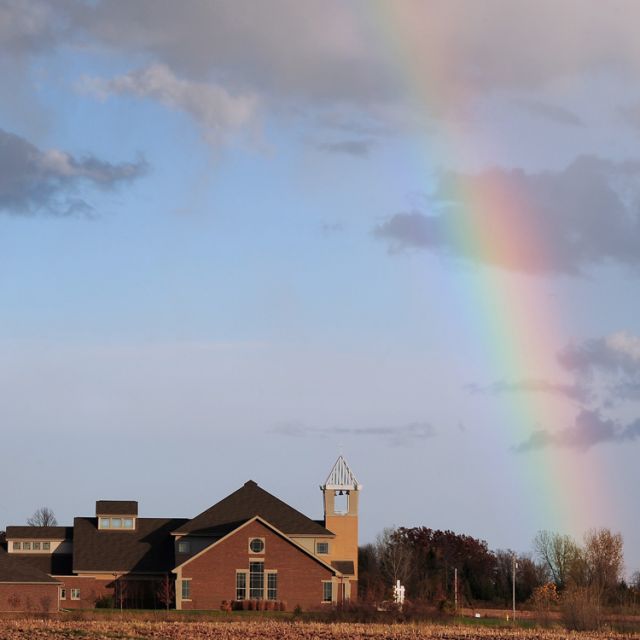The Israelites, along with the Sumerians, Babylonians and others, ascribed floods and disasters that were part of their cultural tradition to the anger of the gods, or in Israel’s case, God. Natural disasters limited to a certain geographical area must have seemed universal in scope. There is no evidence for a universal flood of these biblical proportions, especially one lasting such a short period of time.
In Israel’s collective memory the “flood” story was a symbol of a catastrophic end to a failed divine experiment and a fresh beginning at the hands of a few holy and chosen individuals.
But there is more to Israel’s message: they interpreted the rainbow, a symbol of beauty and wonder, as a sign of God’s reconciliation with humankind. Earlier in the story God was reconciled to the fact that human beings are very weak and flawed. God promised that this terrible event would never happen again. Not only did God make an eternal covenant with all humanity but with creation itself. Within the pages of Genesis there is evidence of a movement away from destructive images of God towards a more positive understanding. God is not the destroyer of worlds and civilizations. Humans bring disaster on themselves but the blame should not be laid on God’s doorstep.
The vivid symbolic memory of the flood was alive and well in the time of Jesus. The author of 1 Peter connected the story with the life and death of Jesus. He drew on legendary extra-biblical traditions to make the point that the death of Jesus benefited everyone — even those “spirits in prison.”
Drawing on those legends, he even gave us a head count from the ark — eight people plus animals. More importantly, this powerful symbol is treated as a “type” or a symbolic preview of the life and death of Jesus. The waters of the flood prefigure baptism and Jesus is in a sense our ark since baptism and the power of Christ is what saves us. When symbols and stories are harnessed for the purposes of teaching profound theological truths they are often more powerful and effective than the merely historical.
But in order for Jesus to accomplish this mission of redemption He too had to be put to the test. The Spirit drove Him into the wilderness to face down all of the blandishments and doubts brought by the Tempter and He must not be tripped up by the collective baggage of humanity. It was a difficult and lonely undertaking but Jesus was up to the challenge and more. Temptations and struggles are not necessarily bad things. They are the means by which we grow spiritually mature and strong.
The first act of Jesus’ mission was a simple proclamation aimed at rousing people spiritually and psychologically for the great event being prepared by God. The time had arrived for a renewed and changed world. The world would be governed by God according to God’s principles. People were exhorted to have a change in mind and heart — a new way of thinking and looking at life and the world — and receive the news of the imminent changes with joy and faith.
Despite the negativity, injustice and suffering of the world God is very present and beginning the work of transformation. This is good news indeed — but when is it going to happen?
That depends on us; we can obstruct God’s work or be the instruments of God’s reign. Whenever even one person begins to live according to divine principles rather than the ways of the world and to further God’s compassionate work, the reign of God is present in a small but important way.
We can be instruments of God’s reign
By Fr. Scott Lewis, S.JFirst Sunday of Lent (Year B) Feb. 26 (Genesis 9:8-15; Psalm 25; 1 Peter 3:18-22; Mark 1:12-15)
What is the connection between a beautiful rainbow and the aftermath of a catastrophic flood? To our own minds, there is no connection at all. The flood is the result of natural forces — rain, wind and tides — and there is little or no meaning in it. A rainbow, as beautiful as it is, is caused by the sun being refracted through the moisture in the air. But if you are a person living in the ancient world, every manifestation of nature is the hand of God. Ancient people “connected dots” — event “B” occurred after event “A,” therefore “A” must have been the cause, with God as the ultimate connection between all events.

